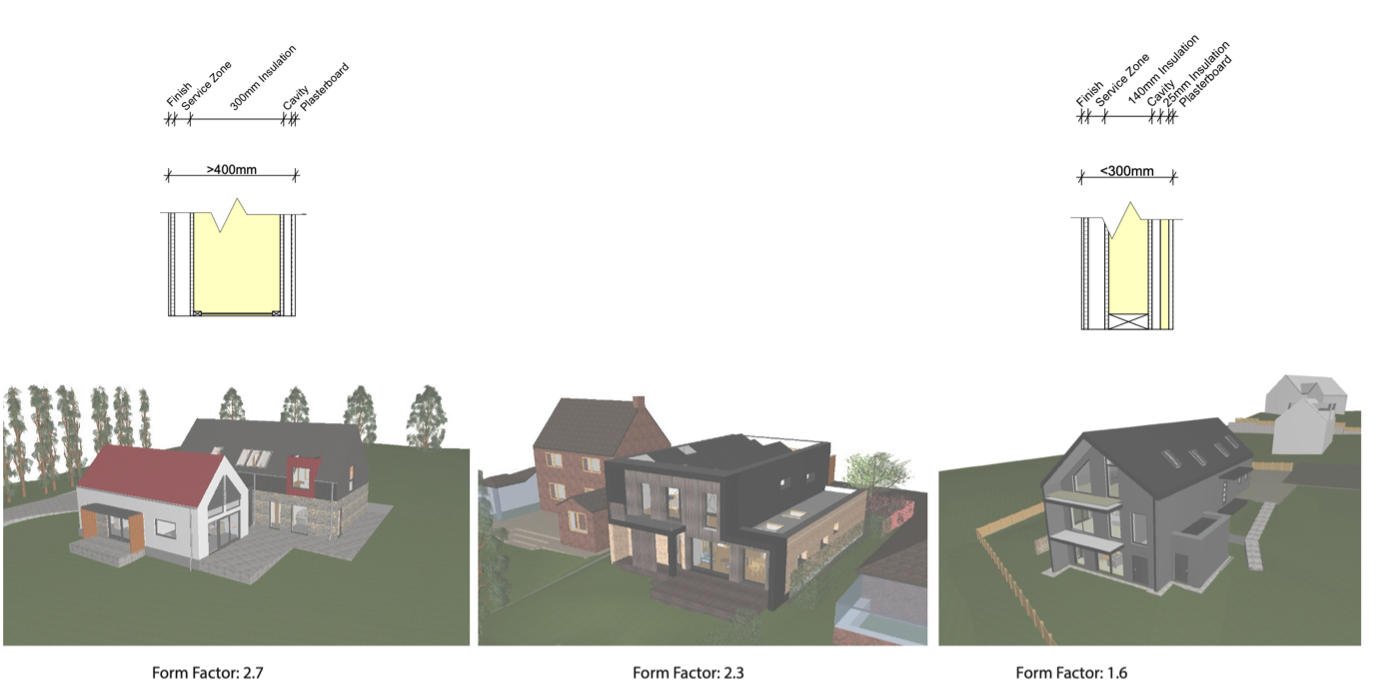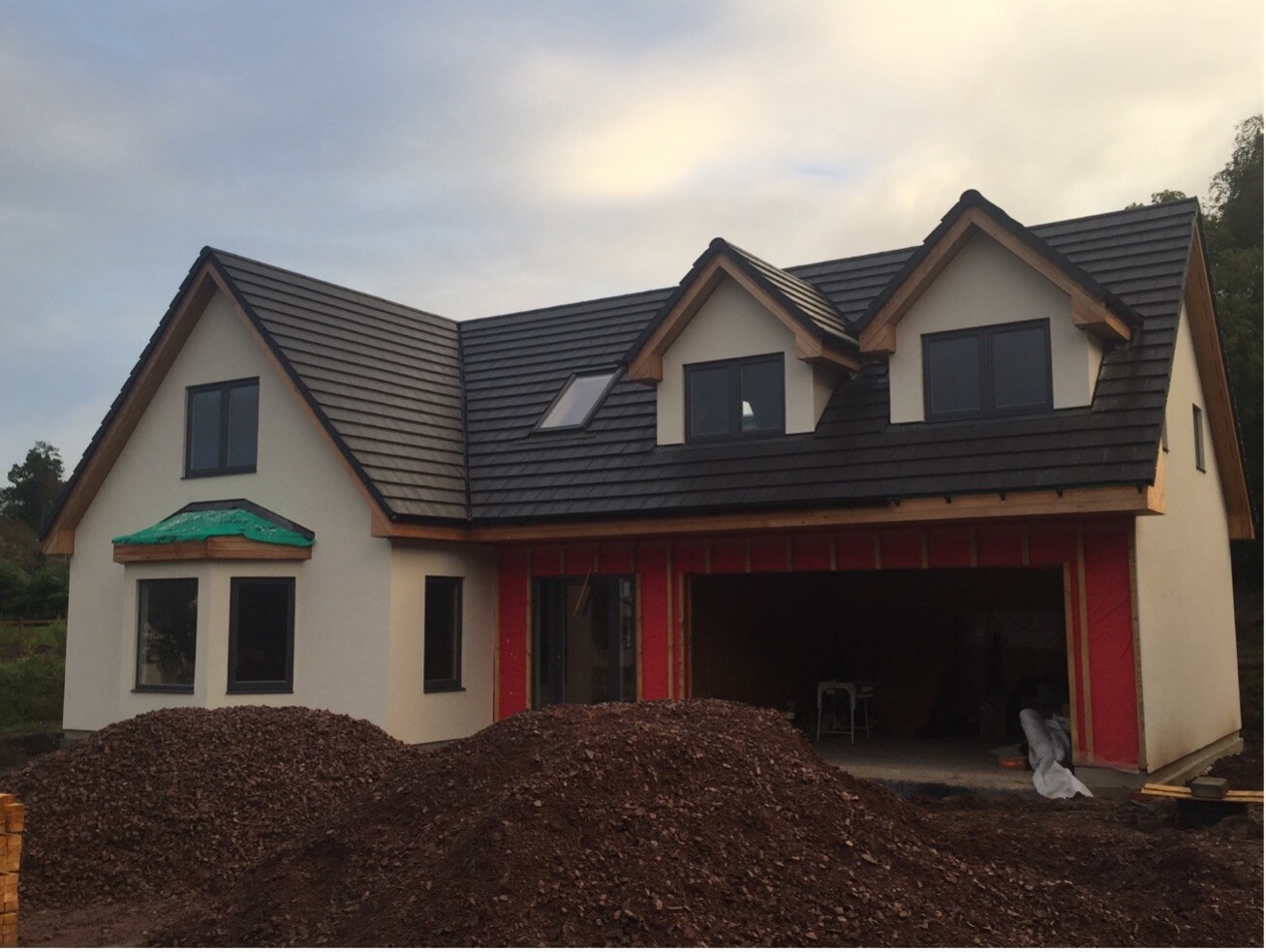In the ever-long pursuit of energy efficiency and sustainable building practices, architects, engineers, and contractors continually explore innovative strategies to minimise heat loss in their structures.
Among the critical considerations in this endeavour is the concept of the Heat Loss Form Factor (HLFF). A parameter that has been used by the Passive House Institute, that plays a pivotal role in determining a building's thermal performance and is also critical in the Passive House process.
Want to know more about the significance of the HLFF? Then this is the article for you. Let's dive in and see how to factor in the form factor metric.
WHAT EXACTLY IS FORM FACTOR?
The Heat Loss Form Factor is measured as the ratio of the thermal envelope surface area to the treated floor area (TFA). The thermal envelope in low energy building consists of your high-performance external floor, wall and roof. To achieve this external fabric high performance, the building needs to have an efficient surface area in relation to its size.
The formula for calculating the Heat Loss Form Factor involves dividing the total surface area of the building envelope (external walls, roof, and floor) by the total treated floor area. Treated refers to the heated area within the building.

If you didn’t understand a word of that, don’t worry. In simpler terms, it refers to how the shape and size or compactness of a building affects its thermal efficiency. More compact buildings would therefore be easier to make energy efficient. If you are working on a ‘tight’ budget, your goal should be to get your form factor as low as possible.

By its nature, heat always looks for an escape route out of your home and into colder areas (the outside, for example). If your home has a large number of routes for the heat to take, then your form factor would be considerably higher. If the building is less compact, you will need more insulation to achieve the same energy efficiency standard than a more compact shape
Calculating the form factor is a simple tool that will allow you to establish the levels of insulation to meet the 'Fabric First' or Passive House criteria of your low-energy home. Designing to high performance or Passive House standard level however not necessarily mean a compromise on building form. The Passive House can achieve varied forms.
 Design A Design B Design C
Design A Design B Design CAs you can see here, Design A features single and double-storey separate wings with large areas of walls and roofs, which will have a larger form factor than Design C of similar floor area which is more compact, designed over three storeys and has a simpler shape.
Therefore, if the budget is your main constraint, the lower form factor and more compact design make it easier and cheaper to achieve the Passive House/Fabric First standard, with the walls, roof and floor being a little thinner than they would need to be for a more spread-out form.

Here is another example of one of our self-build projects in construction. The form factor score would likely increase from the more complex design of the roof. The dormers create more surface area for heat to escape from. The HLFF of this home would be around 3.
Even though the form factor metric is a key component in heat retention, you should still give yourself the freedom to design the house the way you intended. We at AC Architects always strive to deliver projects that deliver on thermal efficiency and client specifications equally.
HOW THE CALCULATION AFFECTS COST
Higher levels of insulation can also completely change the design requirements to make your building work. These complexities increase the stress on your build budget and can turn away self-builders from achieving thermal efficiency in their designs.
At AC Architects, we guide our self–build clients on the aspects of energy performance and efficient design from the initial stages. Additionally, for the guidance to be tangible, we utilise Passive House Planning Package (PHPP) calculations. Apart from the checks on form factor, the PHPP allows us to provide ‘firm’ advice as to where the improvements to the fabric of your home are desired and where you could make savings.
WHY IS FORM FACTOR IMPORTANT?
Understanding the Form Factor will help you create a home that prioritises heat retention. You may be asking, why do I need to prioritise heat retention in the first place? Let's touch on why it’s such an important metric.
As we mentioned before, a home with a low Form Factor would have lower insulation requirements. This is a great way to save money on sourcing and installing the insulation while keeping your building thermally efficient.
If your home is airtight and can keep the heat in, you’ll simply require less energy to heat it. As energy prices continue to skyrocket, keeping your heating bills down becomes ever more important.
If you’re going down the Passive House route, the HLFF will be part of the assessment. Passive House standards are deep-rooted in the principles of reducing energy consumption by utilising the improvements to the passive elements of a build, such as investing money in the insulation levels. To find out more about Passive House is so important for the future of self-build, click here.
However, if your desire is not to go along the Passive House Certification route, but you still want to build a low-energy home, you can still use the PHPP tool to guide the design and save you money. At AC Architects we have created varied levels of the PHPP service to cater for the individual needs of our self–build clients, and we can provide a ‘basic’ PHPP service that would reassure you that the early design decisions are right for you and your budget.
Additionally, the preliminary PHPP calculations will provide you with the heating demand figure and can be used to obtain quotations for your heating systems, windows and other building components.
To summarise, The Heat Loss Form Factor comes in as a crucial metric in the ever-long quest for sustainable living. By understanding and optimising this factor in building design, you can contribute to the creation of structures that not only minimise their environmental impact but also enhance comfort and efficiency.
As the focus on sustainable construction practices intensifies, the Heat Loss Form Factor is a key weapon in the arsenal of strategies for greener and more energy-conscious build environments.
Want to know more about building a low-energy home? Watch below!



